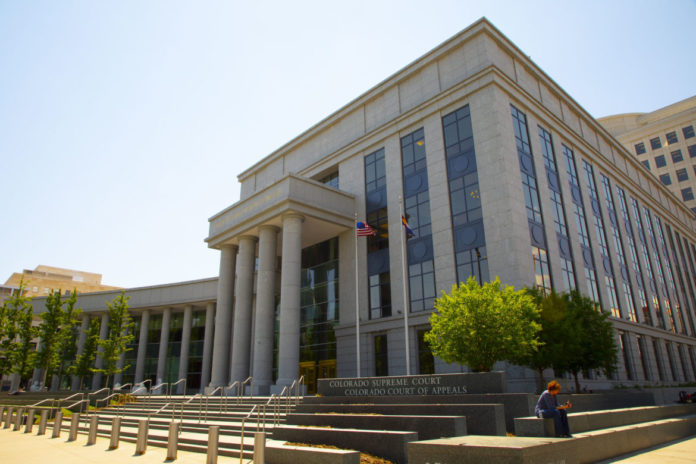

In its sole opinion last week, the Colorado Supreme Court ruled in Dill v. Yamasaki Ring that a decreed water right lacks power if it’s also lacking critical details.
While the 110-year-old decree in the dispute had claimed water from a legitimate source, it didn’t establish a priority number, date or flow rate for that water, thereby making that water right unenforceable, the court held.
“We conclude that the 1909 decree is clear and unambiguous, but … it did not adjudicate an enforceable water right in the springs’ water,” according to the opinion by Justice Carlos Samour.
In Colorado, naturally running water is considered public property, but entities can have private rights to appropriate water. Those rights are created when an entity makes “beneficial use” of water from a stream that hasn’t already been appropriated by someone else. The entity can then apply to have the state confirm that water right in a decree, making it legally enforceable.
Yamasaki Ring, LLC, holds a decree from 1909 that confirms water rights for the Campbell Ditch, an irrigation ditch about 15 miles northwest of Steamboat Springs. The decree has the Campbell Ditch laying claim to three water rights — two coming from Cherry Creek, and one originating from a group of springs near the ditch.
Two families in Fremont County, the Dills and the Pearces, had been using water from the springs since 1903, before the decree was established. They never had rights to the spring water adjudicated, however. In 2011, the Water Division 2’s division engineer served the families a cease-and-desist forbidding them to use the spring water for irrigation. The division engineer issued a curtailment order that redirected the spring water to Cherry Creek where Yamasaki Ring could access it.
In response, the Dills and Pearces filed an action against the state engineer seeking to have the spring water declared “separate and distinct” from the Cherry Creek water rights. The water court denied their motion for preliminary injunction. Yamasaki Ring then asked the water court to answer whether the springs were a “supplemental source” for the Cherry Creek rights in the 1909 decree.
The water court ruled against Yamasaki Ring, saying that because the decree failed to set out a priority number, date or flow rate for the spring water. “The District Court in 1909 was clearly aware” that information “needed to be included in order to decree a separate and distinct water right,” the water court said in its January 2016 order.
The decree only gives owners of the Campbell Ditch water rights “an unenforceable entitlement to water from the springs when the two [Cherry Creek] water rights are not fully satisfied from diversions from Cherry Creek,” the court determined.
After the water court approved the Dills’ and Pearces’ water right application to the spring water, Yamasaki Ring appealed to the state Supreme Court.
The Supreme Court opinion, quoting its 1961 decision in Orchard City Irrigation Disrict v. Whitten, said “a water decree must ‘measure, limit and define both the nature and extent of [the holder’s] rights.’”
But it highlighted priority as the most important prong of a water decree’s claim. Being assigned a priority number allows the water right to be enforced against other decreed water rights.
But the court noted that the 1909 decree’s claim to the spring water lacked “typical decree language” — it had no appropriation date, no priority number or amount of water. “Indeed, it is wholly lacking in indicia of enforceability,” according to the opinion.
Yamasaki Ring argued, however, that the spring water right wasn’t supposed to be a separate water right but instead supplemental to the decree’s two Cherry Creek rights. But the Supreme Court said that, whether separate or supplemental, it’s not an adjudicated water right without a priority number.
Yamasaki Ring also contended that the court should consider extrinsic evidence when determining whether a water right is enforceable. The Supreme Court saw no need to do this because the decree’s language was “clear and unambiguous.”
But it also noted that the extrinsic evidence would actually undermine Yamasaki Ring’s claim to the spring water.
The water decree originated from a dispute between two parties, W. S. Horton and A. W. Alexander. In that dispute, Alexander challenged the claim that Horton was original appropriator of the spring water.
While the district court judge never decided the merits of that claim, those facts perhaps point to why information that would have made the spring water right enforceable is missing from the decree.
“[T]he most reasonable inference is that [the judge] was not convinced in 1909 that Horton had proven his claim to an appropriation of any specific amount of the springs’ water for which a priority could be assigned,” according to the Supreme Court.
— Doug Chartier

